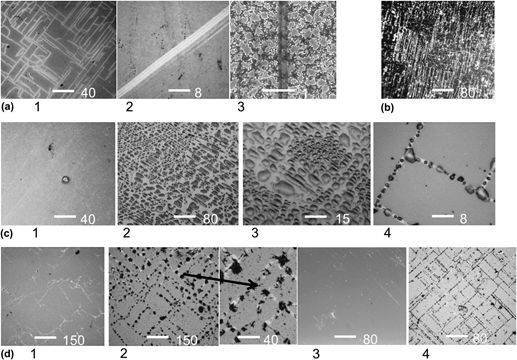Article contents
Strain-arranged structure in amorphous films
Published online by Cambridge University Press: 29 October 2012
Abstract

Amorphous films [BaTiO3 (BTO), SrTiO3 (STO), SrRuO3] on substrates and self-supported films (BTO and STO) were produced by controlling the film/substrate adhesion energy (level of clamping). The stress value in an as-deposited film depends on the clamping level, which defines the stress relief mode. In highly stressed films, the stress abatement is achieved via plastic transformation resulting in formation of “the strain-arranged structure of elastic domains.” Film fractures and delamination occur if the stress magnitude is too high and exceeds the elastic limit of the material. If the stress magnitude is low, the conditions favorable for nucleation and crystallization can arise. Stress in self-supported films is relieved mainly via shape change during film preparation, and the conditions favorable for nucleation and crystallization in annealed self-supported films arise more frequently.
- Type
- Articles
- Information
- Copyright
- Copyright © Materials Research Society 2012
References
REFERENCES
- 3
- Cited by




